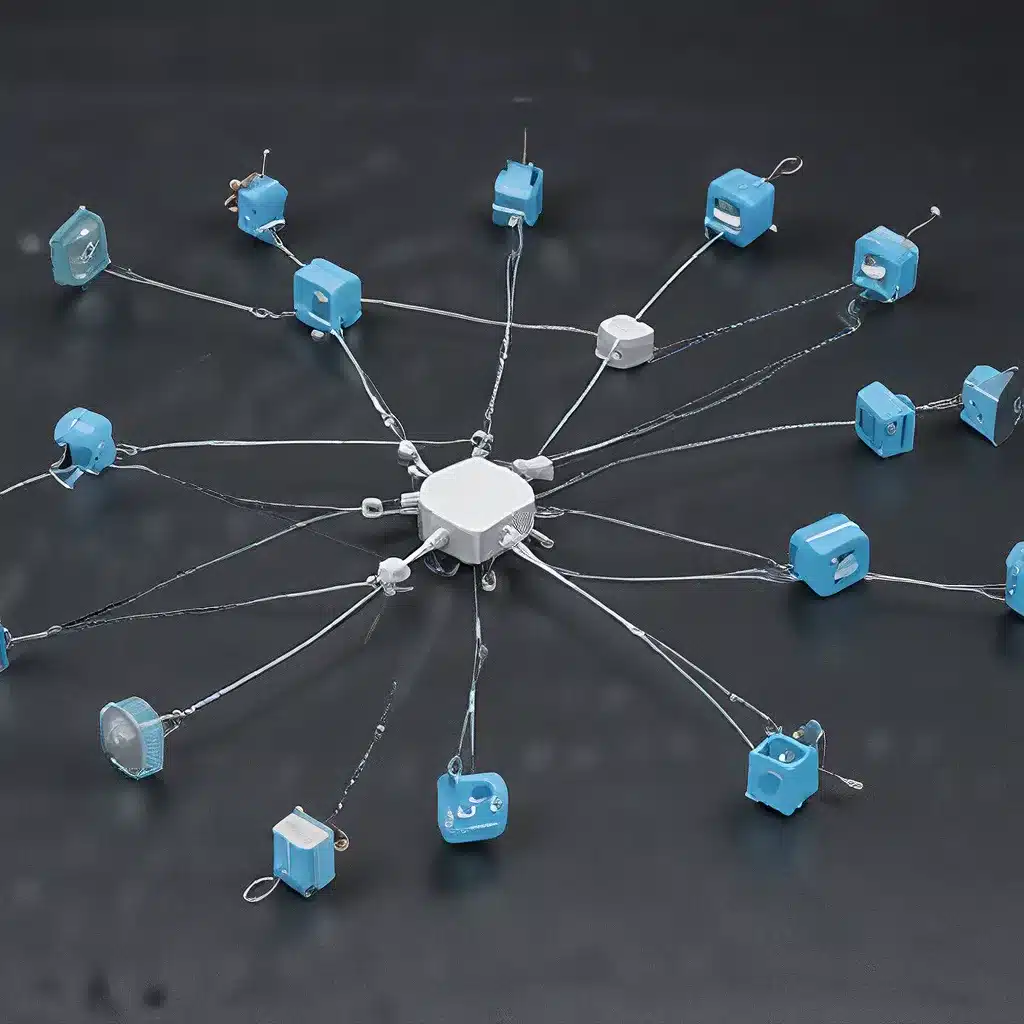
The Challenge of Energy-Harvesting Wireless Sensor Networks
The rise of the Internet of Things (IoT) has led to a proliferation of wireless sensor networks (WSNs) across a wide range of application domains, including body area networks, industrial monitoring, predictive maintenance, and smart farming. These WSNs are increasingly required to perform complex machine learning (ML) tasks directly at the edge, closer to the point of data collection, to support emerging applications.
However, the limited energy reserves, computing power, and communication capabilities of energy-harvesting wireless sensor networks (EH-WSNs) pose significant challenges in executing compute-intensive inference tasks on-device. The sporadic and low-power nature of harvested energy sources, such as solar, vibration, or radio frequency (RF), makes it difficult to reliably run these complex tasks on the edge devices alone.
Balancing Computation, Communication, and Energy Constraints
Prior research has explored various approaches to address the conflict between computation, communication, and power requirements in EH-WSNs, including:
-
Inference Effort Partitioning: Splitting the inference tasks between the edge device and a more capable host, such as a mobile device or cloud, to optimize the overall energy consumption and quality of service (QoS).
-
Mitigation of Energy Provisioning Limitations: Integrating energy harvesting capabilities and leveraging techniques like non-volatile processing to increase the local compute power of edge nodes.
-
Minimizing Communication Overheads: Employing data compression and feature extraction methods, such as coresets, to reduce the communication payload size and energy required for data transmission.
Despite these efforts, there is still a significant need for a comprehensive hardware-software co-design approach that can maximize the number of inferences performed on EH-WSN nodes while efficiently offloading the remaining tasks to a coordinating host device.
Introducing Seeker: A Holistic Approach
To address these challenges, we present Seeker, a novel approach that leverages both hardware and software optimizations to enable energy-efficient distributed inference in EH-WSN deployments. Seeker focuses on three key aspects:
-
Efficient Communication: Seeker extends traditional coreset techniques to dynamically adapt the data representation to the available harvested energy and the specific application requirements, reducing the communication payload size by up to 89% while maintaining high inference accuracy.
-
Efficient Computation: Seeker augments the EH-sensor nodes with quantized deep neural networks (DNNs) and data memoization techniques to increase the number of accurate inferences performed at the edge by up to 40%.
-
Efficient Hardware: Seeker proposes a low-power, low-latency hardware accelerator for efficient coreset formation and DNN inference, further improving the number of samples that can be processed under the EH budget and achieving up to 5% higher accuracy compared to the state-of-the-art.
Coresets for Efficient Communication
One of the key innovations in Seeker is the use of coresets, a data representation technique from computational geometry, to efficiently offload data from the EH-WSN nodes to a more capable host device. Traditional lossy compression techniques often discard or distort important features, which can significantly degrade the inference accuracy.
Seeker’s activity-aware coreset construction dynamically adapts the data representation to the available harvested energy and the specific application requirements, such as human activity recognition or predictive maintenance. This reduces the communication payload size by up to 89% while preserving the essential features for accurate inference on the host device.
Furthermore, Seeker introduces a recoverable coreset construction technique, which allows the original data to be reconstructed from the compressed representation with as little as 0.2% accuracy loss. This ensures that the host device can complete the inference tasks with high fidelity, even for the samples that could not be processed on the EH-WSN nodes due to energy constraints.
Hardware Acceleration for Coresets and DNN Inference
To enable efficient coreset formation and DNN inference on the EH-WSN nodes, Seeker proposes a specialized hardware accelerator design. This low-power, low-latency hardware component provides:
- Quantized DNN Support: The accelerator supports multiple quantization levels to enable energy-efficient DNN inference on the edge devices, resulting in up to 40% more accurate inferences compared to the state-of-the-art.
- Coreset Construction: The hardware accelerator efficiently builds coresets, increasing the number of samples that can be processed or transmitted under the EH budget and improving the overall accuracy by up to 5%.
- Non-Volatile Memory: The use of non-volatile memory in the accelerator ensures that the computation progress is not lost during power failures, further enhancing the reliability and QoS of the EH-WSN.
Evaluation and Results
Seeker’s comprehensive hardware-software co-design approach has been extensively evaluated using real-world datasets and benchmarks, including human activity recognition (HAR) and predictive maintenance workloads.
Even when powered by an unreliable energy harvesting source, Seeker’s optimizations result in 86.8% top-1 accuracy, surpassing the 81.2% accuracy of a fully-powered system running a state-of-the-art classifier optimized for energy efficiency.
Furthermore, Seeker’s coreset-based data representation can be easily integrated into any commercial IoT device to enable efficient communication, showcasing the broad applicability of this approach beyond EH-WSN deployments.
Conclusion: Towards Sustainable and Intelligent IoT Ecosystems
The distributed optimization techniques introduced in Seeker represent a significant advancement in enabling energy-efficient, intelligent sensor networks for the IoT era. By combining hardware and software innovations, Seeker paves the way for the deployment of sustainable, battery-free sensor infrastructures that can perform complex analytics at the edge, unlocking new possibilities for sensor network applications across a wide range of industries.
As the demand for intelligent, connected devices continues to grow, the insights and technologies presented in this article will play a crucial role in shaping the future of the Internet of Things, empowering developers, researchers, and practitioners to build more energy-efficient, reliable, and capable sensor network ecosystems.